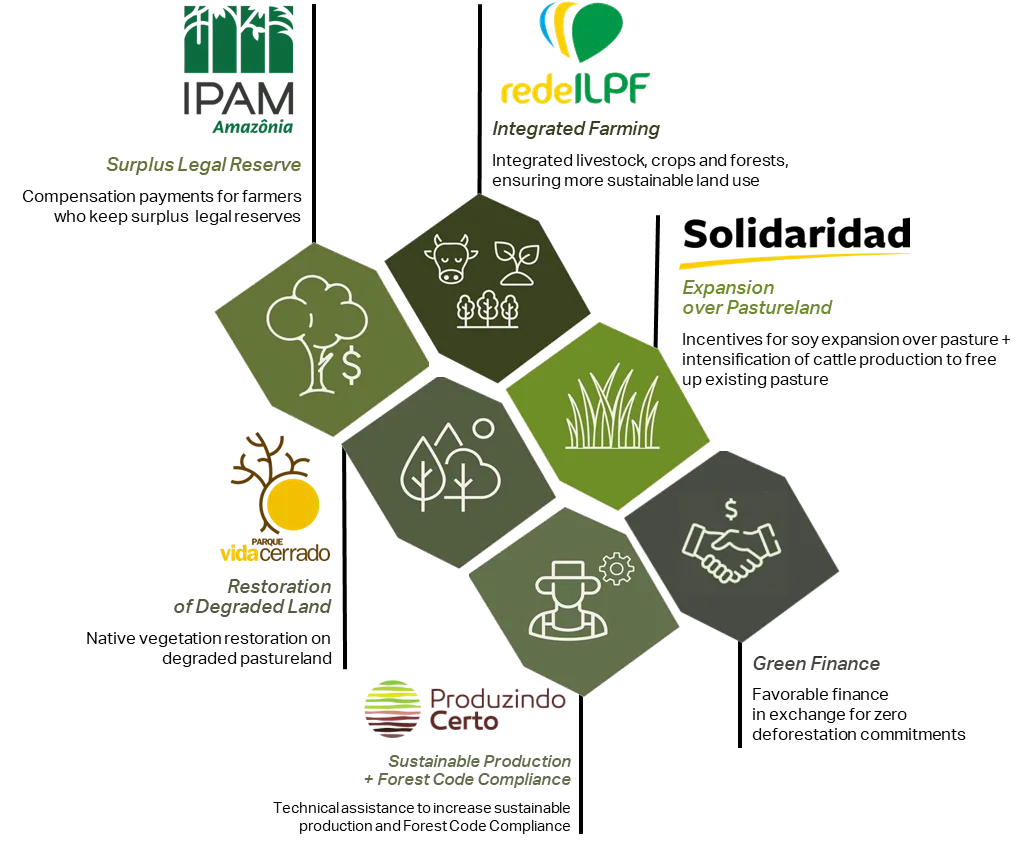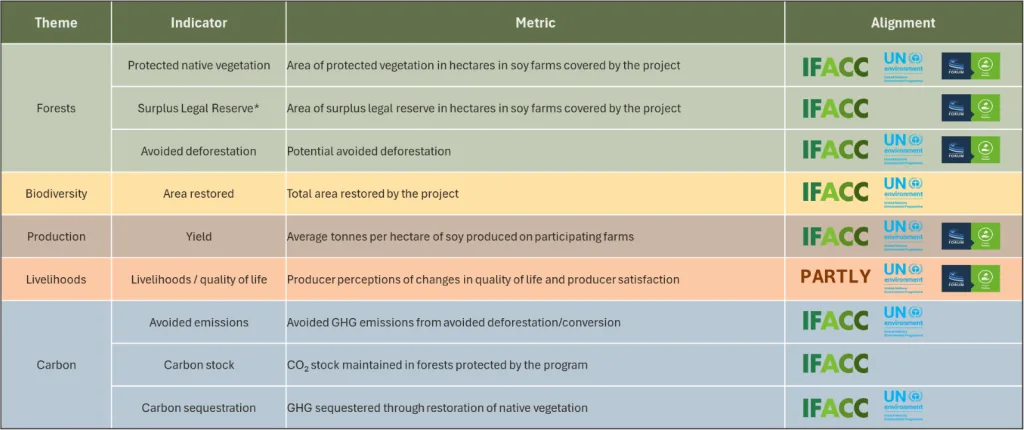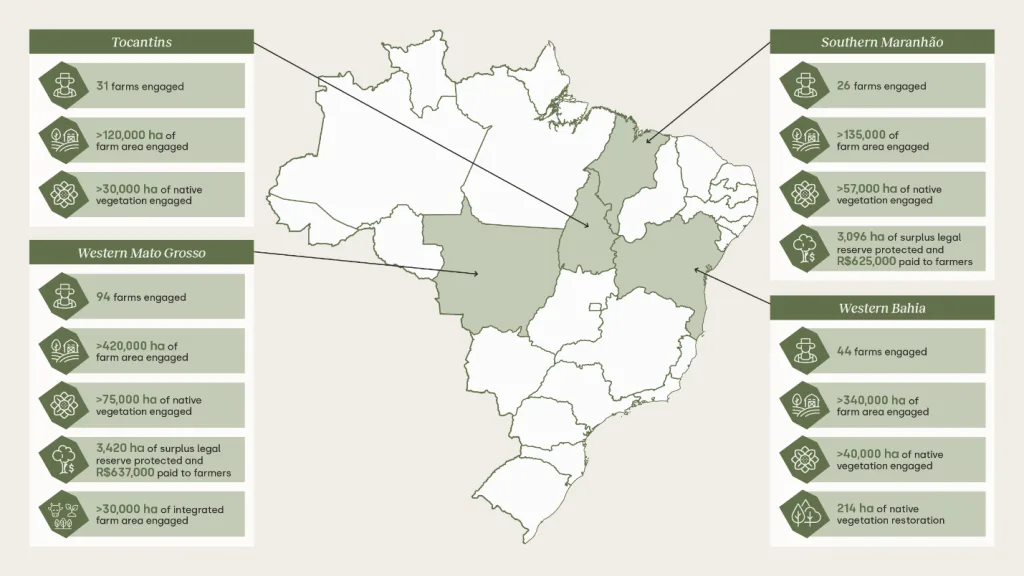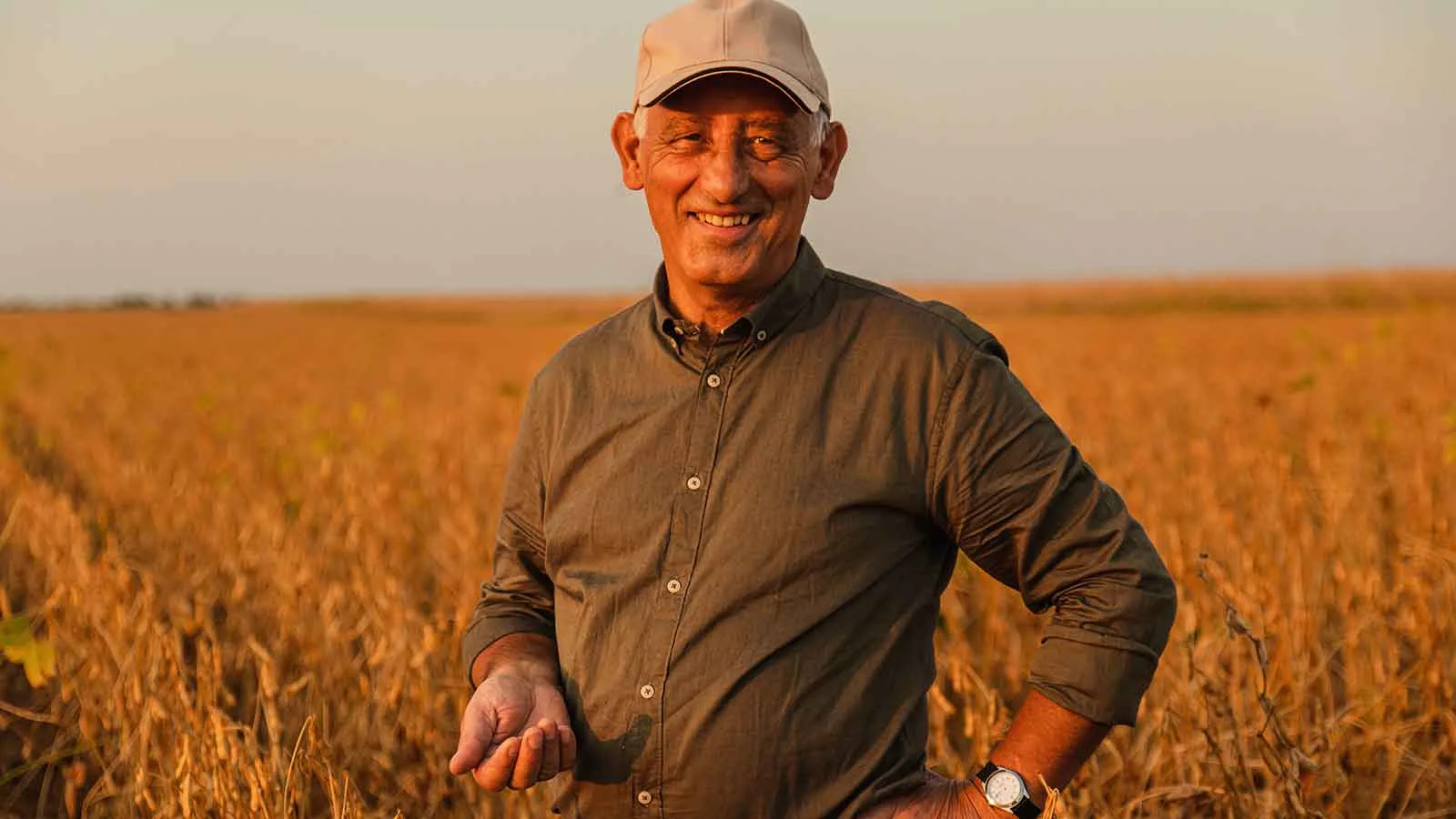The Brazilian Cerrado – the world’s most biodiverse savannah and a vital water source and carbon sink – plays a critical role in global food systems and climate stability. As agricultural production continues to expand to meet rising demand, there is a growing opportunity to align this growth with sustainable practices. Today, with global trade dynamics shifting rapidly and potentially increasing this pressure, the need to support sustainable production has never been more critical, and the private sector has a crucial role to play in this respect.
Public and private efforts in recent years have contributed to a significant decline in deforestation and conversion across Brazil. However, over the past two consecutive years, the rate of native vegetation loss in the Cerrado has exceeded that of the Amazon. The Cerrado has experienced a larger total area of deforestation and conversion, with over 4 million hectares of native vegetation lost since 2019 according to PRODES. Approximately three-quarters of this loss occurred in the MATOPIBA region.
To help address this challenge, corporate members of the Soft Commodities Forum (SCF) are investing up to $7.2 million toward the Farmer First Clusters (FFC) initiative, working with local implementing partners in four high-risk landscapes: Western Mato Grosso, Southern Maranhão, Tocantins and Western Bahia. The FFC has already supported hundreds of producers through a mix of solutions that support sustainable deforestation- and conversion-free (DCF) soy production. SCF members are investing in these transformational initiatives and demonstrating tangible progress, while some downstream companies have shown growing interest in contributing to the projects and actively engaging in shared responsibility. However, to truly scale these efforts, broader support is still needed.
Last year, the SCF and the Consumers Goods Forum Forest Positive Coalition (CGF-FPC) launched the Sustainable Landscape Partnership (SLP) to scaleup these efforts, aligning on a vision of regenerative and resilient production landscapes with positive outcomes for people, nature, climate and business. The SLP shows collective impact through proof of concept in Western Mato Grosso and beyond, aiming to create a multi-stakeholder partnership supporting a forest-positive landscape transition across the Cerrado.
So far, the SLP has leveraged investment from SCF members, retailers, and consumer goods companies. This year, that commitment is growing with opportunities to expand co-funding from various actors. The London Climate Action Week presents a great opportunity to learn more, connect with aligned partners and explore how further investment can help accelerate DCF soy production.
Farmer First Clusters: A smart mix of context-specific solutions
The Farmer First Clusters (FFC) initiative fosters sustainable land use, supports farmer livelihoods, and lays the foundation for scalable, forest-positive production systems. Through a mix of financial incentives and technical assistance, the FFC supports producers in transitioning to DCF soy production. The approach is aligned with commitments of leading value chain companies under the Agriculture Sector Roadmap to 1.5°C.
As of May 2025, 236 farms are engaged in a variety of sustainable land-use solutions under the FFC, covering over one million hectares of farm area.

To track progress and impact, the FFC initiative uses a comprehensive set of outcome indicators across key areas.
These indicators align with the Innovative Finance for the Amazon, Cerrado and Chaco (IFACC) initiative, the Consumer Goods Forum Forest Positive Coalition (CGF-FPC), and the UN Sustainable Development Goals (SDGs), reinforcing the FFC’s commitment to transparent, measurable impact. The indicators also contribute to the ongoing harmonization of regenerative landscape metrics under the Landscape Accelerator–Brazil (LAB) project ahead of COP30.

Four priority landscapes with tailored solutions
The SCF and partners believe that the landscape approach is critical for advancing regenerative and resilient production regions in Brazil. And yet, there is no one-size-fits-all solution – each landscape has its own institutional maturity and unique ecosystem and agri-production dynamics. That’s why the program offers a tailored bundle of solutions, known as clusters, designed to meet the specific needs of each local context.

Landscape #1: Western Mato Grosso
Mato Grosso is the largest commodities-producing state in Brazil, with some of the highest national outputs of beef, corn, and cotton. If it were a country, it would rank as the third-largest exporter of these commodities globally. However, this scale of production has contributed to elevated deforestation and land conversion in the region. To address these challenges, the FFC initiative has been actively implementing targeted solutions aimed at promoting sustainable production while constraining environmental impacts.
Farms in Western Mato Grosso are enrolled in compensation for Surplus Legal Reserve (SLR), technical assistance, or support with integrated crop-livestock-forestry (IPLF) farming practices led by IPAM, Produzindo Certo, and Rede ILPF respectively.
Currently:
- 94 farms are enrolled;
- over 420,000 hectares of farm area are engaged;
- over 75,000 hectares of native vegetation are engaged;
- 3,420 hectares of SLR are under protection, with over R$637,000 already paid to four farmers through the SLR compensation mechanism;
- 15 farms with over 30,000 hectares of ICLF systems are enrolled.
Landscape #2: Southern Maranhão
Accounting for 10% of recent soy expansion, the Maranhão landscape ranks as the fourth highest in deforestation and land conversion within the Cerrado biome. It is home to 38 high-risk municipalities identified by the SCF’s 2024 risk assessment study. To address these challenges and promote sustainable land use, a combination of targeted solutions has been deployed. These include compensation for SLR in partnership with IPAM, and technical extension services provided by Produzindo Certo – both of which lay the groundwork for future green finance mechanisms and additional payments for conservation efforts.
Currently:
- 27 farms are enrolled;
- Over 135,000 hectares of farm area are engaged;
- Over 57,000 hectares of native vegetation are engaged;
- 3,096 hectares of SLR are formally under protection, with over R$625,000 already paid to seven farmers through the SLR compensation mechanism.
Landscape #3: Tocantins
Tocantins, the leading state in Brazil for recent soy expansion – accounting for 19% – is a key focus landscape within the FFC initiative. The strategy in Tocantins encompasses eight municipalities and prioritizes a phased approach, beginning with the scale-up of integrated farming systems and advancing toward responsible expansion over existing pastureland. This is being carried out through partnerships with Solidaridad for sustainable land-use strategies, Produzindo Certo for farmer extension services, and green finance mechanisms to support implementation.
Currently:
- 33 farms are enrolled;
- Over 120,000 hectares of farm area are engaged;
- Over 30,000 hectares of native vegetation are engaged.
Landscape #4: Western Bahia
Bahia, the second largest deforestation frontier in the Matopiba region, accounts for 16% of recent agricultural expansion and is another one of the main priority landscapes for the SCF. The FFC is actively engaged in seven municipalities across Western Bahia, implementing a combination of sustainable production practices and ecological restoration efforts. A pioneering restoration initiative led by Parque Vida Cerrado has been scaled in the region, complemented by sustainable farming solutions provided through Produzindo Certo.
Currently:
- 44 farms are enrolled;
- Over 340,000 hectares of farm area are engaged;
- Over 40,000 hectares of native vegetation are engaged;
- 214 hectares are under native vegetation restoration.
Our call to action
The SCF and CGF are seeking partners to scale up investment for DCF production in the Cerrado, supporting regenerative and resilient production regions. Building on momentum from New York Climate Week 2024, we invite stakeholders to join us at London Climate Action Week in a multistakeholder event regarding Transition Finance for Resilient Agricultural Systems on June 26th, 2025 from 14:00-16:00. This workshop will explore how to scale sustainable production landscapes and value chains in the Brazilian Cerrado. If you are interested, sign up through this link.
In the next phase of the FFC initiative through 2026, the goal is to enroll 350 farms, engage over 2 million hectares of farm area (equivalent to 50% of Switzerland’s land area) and contribute to the conservation of over 400,000 hectares of native vegetation. This next phase also involves developing scalable financial models, replicating existing efforts, and incorporating key learnings in further implementation.
By advancing incentives for sustainable DCF production, strengthening governance and building a broad coalition of support, the Farmer First Clusters and the Sustainable Landscapes Partnership is laying the foundation for a Cerrado where productivity, farmer livelihoods and environmental integrity are not competing goals, but mutually reinforcing outcomes. Please join us in this critical mission.
The SLP welcomes interest from new partners to support this landscape approach. Please reach out to Debora Dias (d.dias@theconsumergoodsforum.com) or Matt Inbusch (inbusch@wbcsd.org) for more information on how to get involved.
Outline
